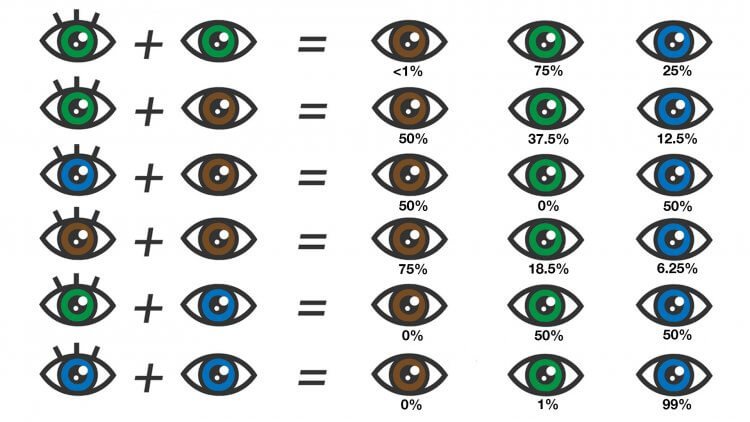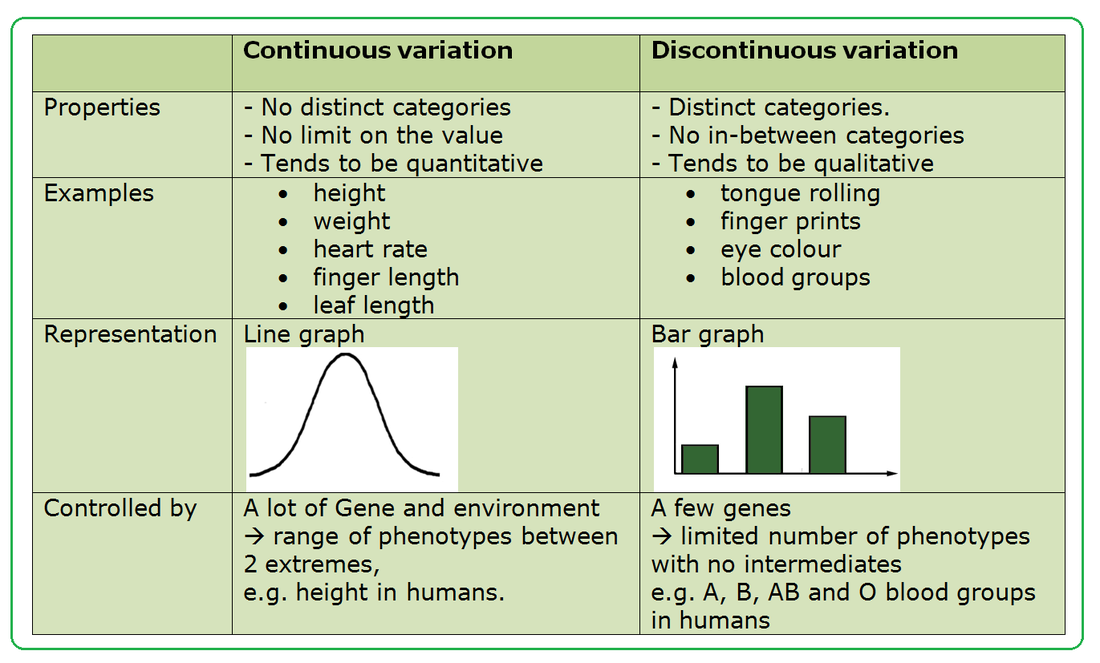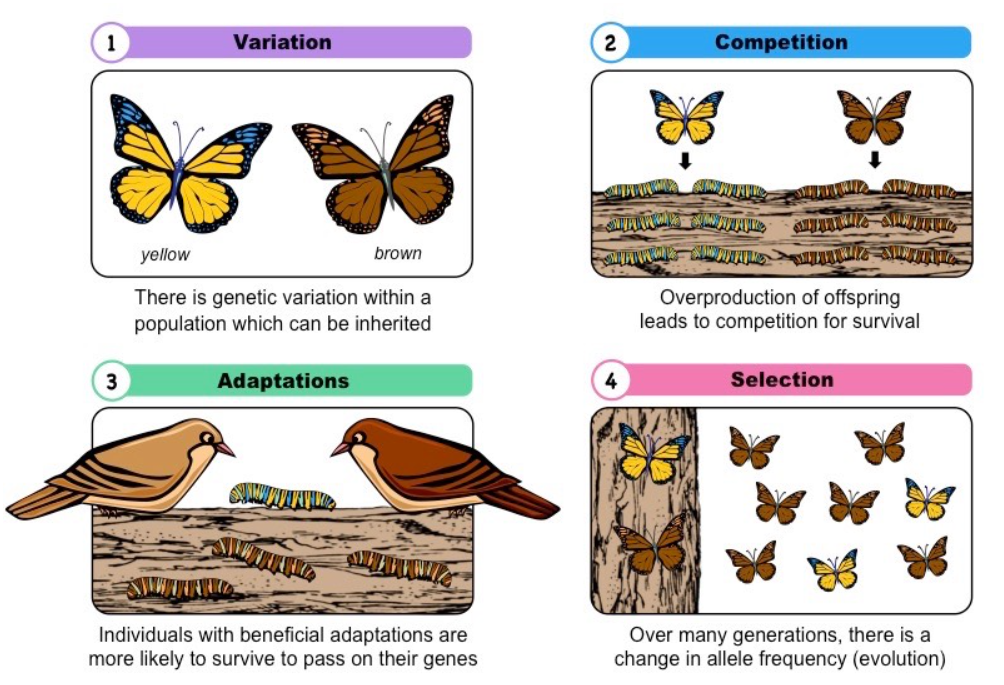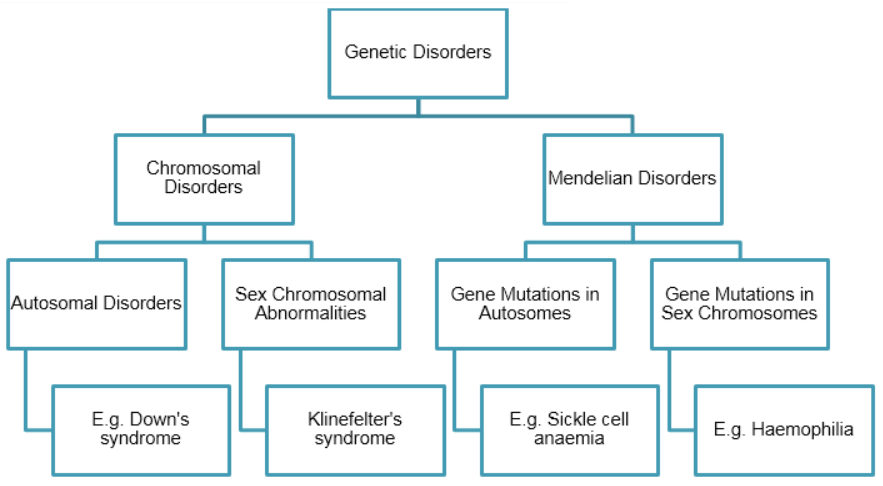CBSE Class 12 Biology Chapter 5 Revision Notes Part 2
Chapter 5: Principle of Inheritance and Variation Revision Notes Part 1
Inheritance is the basis of genetic variation. The causes of genetic variation may be natural, or they may be caused due to a mutation. In the way of natural selection, natural variation between generations comes to exist, and this variation over many generations leads to the evolution of organisms and the genetic differences that come to exist through evolution.
Genetic Variation
-
Genetic variation occurs in the following ways:→ Independent assortment of chromosomes→ Crossing over→ Random fertilization of gametes→ Mutation
-
The first three of these processes reshuffle existing alleles. Offsprings have combinations of already present alleles. This genetic variation produces phenotypic variation. Mutation, however, does not reshuffle existing alleles. Rather it can produce completely new alleles.
-
Mutations in body cells or somatic cells cannot be passed on to offspring by sexual reproduction. However, mutations in cells in the ovaries or testes can be inherited by offspring through sexual reproduction. If a cell containing mutation forms gametes, then the gametes might also contain the mutation. This mutation will then also be present in the zygote, whose single cell then divides to form a whole new organism containing the mutation.
-
Variation can also occur due to environmental differences, that is, differences between the environment in which organisms live. Parents do not pass on the variation caused by the environment to their offspring.
Continuous and Discontinuous Variation
- Phenotypic differences that occur through variation include qualitative differences such as blood groups and quantitative differences such as weight and height.
- Qualitative differences fall into clearly marked categories, for example, blood group. This is a discontinuous variation.
- The quantitative differences between heights may be minute and difficult to tell apart. The height class is just a range that lies between two extremes. This is an example of continuous variation.
Effects on Variation
- Different alleles at a single locus have small effects on the phenotype
- Different genes have the same additive effect on the phenotype.
- Many genes may have a combined impact on a particular phenotypic trait. Such genes are known as polygenes.
Natural Selection
-
All organisms have the reproductive potential to increase their respective populations. As a population increases, environmental factors come into play to keep them down. These factors may be biotic, i.e., caused by other living organisms such as through competition for food, or they might be abiotic, i.e., caused by non-living matter, such as water supply or nutrient levels in the soil.
-
These environmental factors reduce the rate of growth of the population by adding external pressures. The overall population will reduce when the pressures are sufficiently great in such an environment.
-
Variation within a population, wherein such external pressures are applied, ensures that only the fittest survive through the process of natural selection. For example, if, due to variation, a particular type of bird is colored to camouflage with the surroundings, this bird is less likely to get eaten by predators, and hence, more likely to survive. When this bird reproduces, its camouflaging trait will be passed on, giving its offspring a better chance at survival than other birds without this camouflaging trait. This mechanism of environmental pressure ensures the survival of the fittest through natural selection.
Evolution
- Variation and natural selection are the basis of evolution, resulting in the genetic change of organisms that gives them a selective advantage, or a natural edge, in survival.
- Normally, natural selection keeps things the way they are and stabilizes them.
- However, allele frequencies may also change due to a new environmental factor or a new allele. When a single phenotype is favored, causing the allele frequency to continuously shift in one direction, it results in directional selection.
- Another type of selection, called disruptive selection, can occur when conditions favor both extremes of a population.
Genetic Disorders
Variations or mutations can sometimes also lead to various genetic disorders.
Genetic disorders are categorized into – Mendelian and Chromosomal disorders:
Mendelian disorders occur because of change or alteration in a single gene. Examples of such disorders are cystic fibrosis, thalassemia, haemophilia, colour blindness, phenylketonuria, sickle cell anemia, etc.
Chromosomal disorders occur because of the excess, absence, or abnormal arrangement of one or more chromosomes. Examples of such disorders are Down’s syndrome, Turner syndrome, Klinefelter syndrome, etc.
Sources:
Principles of inheritance and variation https://ncert.nic.in/textbook/pdf/lebo105.pdf. Accessed on 29 Dec, 2021
]]>



